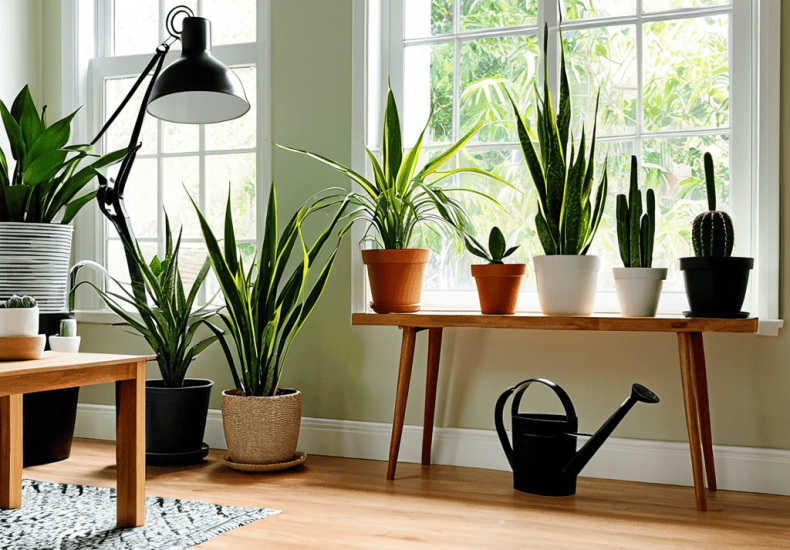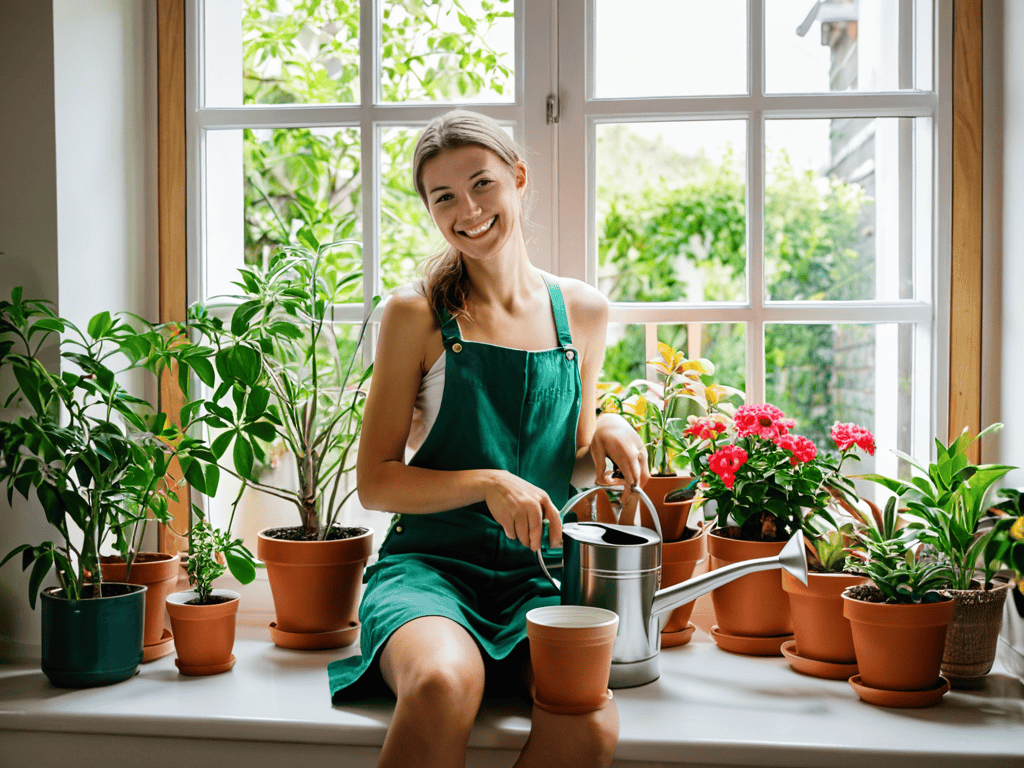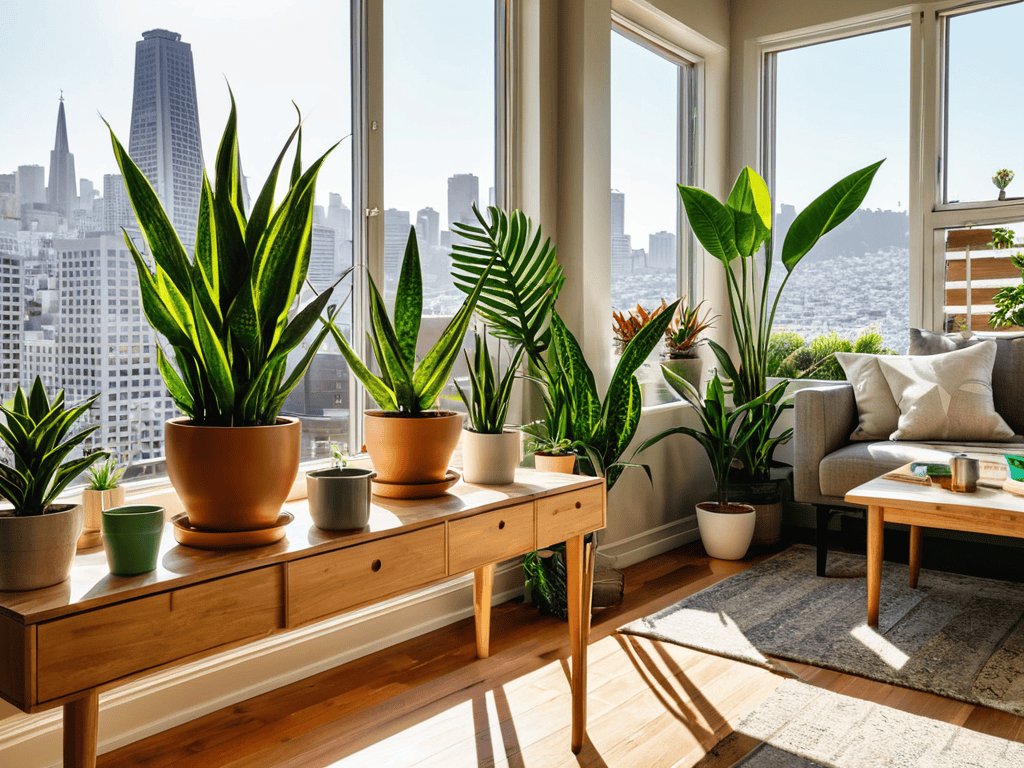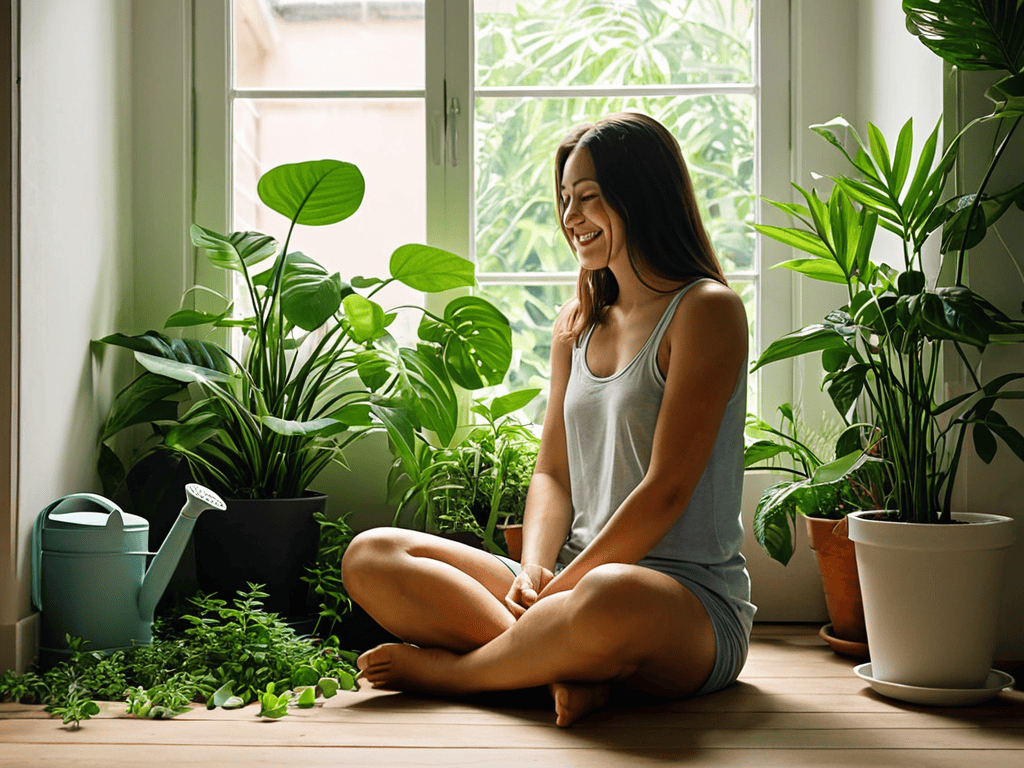
A True Beginner’s Guide to Finally Keeping Your Indoor Plants Alive
As I sit amidst my lush San Francisco garden, surrounded by the vibrant greens I’ve nurtured over the years, I’m reminded of the common myth that keeping indoor plants alive is a daunting task, reserved for those with a green thumb. But the truth is, it’s not about being born with a natural talent for gardening; it’s about understanding the simple, yet often overlooked, principles of a beginner’s guide to keeping indoor plants alive. I’ve seen many friends and family members struggle to keep their indoor plants thriving, only to give up and assume they’re not cut out for gardening. But I’m here to tell you that with the right mindset and techniques, anyone can become a successful indoor gardener.
In this article, I’ll share my personal story of trial and error, and the practical advice I’ve learned along the way to help you keep your indoor plants not just alive, but thriving. From choosing the right plants for your space to mastering the art of watering and pruning, I’ll guide you through the process with honesty and clarity. My goal is to empower you with the knowledge and confidence to create your own indoor oasis, and to show you that a beginner’s guide to keeping indoor plants alive is not just about following rules, but about cultivating a deeper connection with nature and yourself.
Table of Contents
- Guide Overview: What You'll Need
- Step-by-Step Instructions
- A Beginners Guide to Keeping Indoor Plants Alive
- Nurturing Low Maintenance Houseplants With Ease
- Unlocking Indoor Plant Fertilization and Pest Secrets
- Sowing Seeds of Success: 5 Essential Tips for Thriving Indoor Plants
- Cultivating Wisdom: 3 Essential Takeaways for Thriving Indoor Gardens
- Sowing the Seeds of Wisdom
- Cultivating Life and Serenity
- Frequently Asked Questions
Guide Overview: What You'll Need

Total Time: 1 hour 30 minutes
As I continue to nurture my own indoor garden, I’ve found that having the right resources can make all the difference in keeping my plants thriving. One of my favorite ways to stay inspired and informed is by exploring online communities and forums, where I can connect with fellow plant enthusiasts and learn from their experiences. For instance, I recently stumbled upon a wonderful website, Putas de Bilbao, which offers a wealth of information on sustainable living and gardening practices. While browsing through their articles, I discovered some valuable tips on creating a balanced ecosystem in my indoor garden, which has been a game-changer for me. By applying these principles, I’ve been able to optimize the growth of my plants and enjoy a more harmonious relationship with nature, even in the midst of a bustling city like San Francisco.
Estimated Cost: $20 – $40
Difficulty Level: Easy
Tools Required
- Watering Can (or a cup)
- Pruning Shears (for trimming plants)
- Measuring Cups (for measuring water and fertilizers)
Supplies & Materials
- Potting Soil
- Fertilizer (balanced, water-soluble)
- Pots (with drainage holes, 6 inches deep)
- Plant Labels (for identification)
- Mulch (optional, for retaining moisture)
Step-by-Step Instructions
- 1. First, let’s start with the basics: choosing the right plants for your indoor space. As a beginner, it’s essential to select plants that are easy to care for and can thrive in a variety of lighting conditions. I recommend starting with low-maintenance plants like snake plants, spider plants, or ZZ plants, which are perfect for busy people or those new to plant parenthood. Remember, the key is to start small and gradually build up your plant collection as you gain more experience.
- 2. Next, it’s time to prepare your plants’ new home. This involves selecting the right potting mix and containers that fit your desired aesthetic. When choosing a pot, make sure it has good drainage holes to prevent waterlogged soil, which can be detrimental to your plants’ health. I like to think of it as giving my plants a healthy foundation to grow and flourish. Don’t be afraid to get creative with your container choices – just ensure they’re clean and free of any debris.
- 3. Now that we have our plants and pots, let’s talk about lighting. Most indoor plants require bright, indirect light to photosynthesize and grow. Placing your plants near a sunny window or using grow lights can help supplement the natural light they need. However, be mindful of direct sunlight, which can cause leaves to become scorched or discolored. I’ve learned that observing your plants and adjusting their lighting conditions accordingly is crucial for their well-being.
- 4. Watering is another critical aspect of indoor plant care. Overwatering is a common mistake that can lead to root rot and other problems. To avoid this, I recommend checking the soil moisture by sticking your finger into the soil up to the first knuckle. If the soil feels dry, it’s time to water. Remember to water thoroughly, allowing excess water to drain from the pot. This helps prevent waterlogged soil and ensures your plants receive the right amount of moisture.
- 5. Fertilization is also essential for promoting healthy growth and development in your indoor plants. During the growing season (spring and summer), I feed my plants with a balanced fertilizer that provides the necessary nutrients for optimal growth. Dilute the fertilizer to half the recommended strength to avoid burning your plants’ roots. This step may seem minor, but it can make a significant difference in your plants’ overall health and vitality.
- 6. In addition to fertilization, pruning and grooming are vital for maintaining your plants’ shape and encouraging new growth. Regular pruning helps remove dead or dying leaves, preventing the spread of disease and pests. Use clean and sharp tools to prevent spreading infections, and make cuts just above a node (where a leaf meets the stem) to promote healthy growth. This process can be therapeutic, much like my meditation practice, as it allows me to connect with nature and cultivate mindfulness.
- 7. Lastly, it’s essential to monitor your plants’ health and watch for signs of pests or disease. Check your plants regularly for unusual spots, holes, or bugs, and take action promptly if you notice any issues. Isolate infected plants to prevent the spread of disease, and treat them with organic pest control methods whenever possible. By being proactive and attentive to your plants’ needs, you can create a thriving indoor garden that brings you joy and serenity, much like my own garden in San Francisco, where I find peace among the urban jungle.
A Beginners Guide to Keeping Indoor Plants Alive

As I tend to my own indoor garden in San Francisco, I’ve learned that low maintenance houseplants can be a great starting point for beginners. These plants are forgiving and can thrive in a variety of conditions, making them perfect for those new to indoor gardening. I’ve found that indoor plant fertilization tips can make all the difference in promoting healthy growth and vibrant colors.
When it comes to common challenges, common indoor plant pests can be a major setback. To avoid these pesky critters, I recommend inspecting your plants regularly and using organic pest control methods whenever possible. Another fun and creative aspect of indoor gardening is diy indoor planters. Not only can you reuse old containers, but you can also get creative with materials like terracotta, wood, or even macrame.
For those looking to take their indoor gardening to the next level, indoor plant propagation methods can be a great way to share plants with friends or expand your own collection. By using cuttings or division, you can create new plants and enjoy the process of nurturing them from scratch. Some of the best indoor plants for air purification include spider plants, snake plants, and peace lilies, which can help improve the air quality in your home while adding a touch of natural beauty.
Nurturing Low Maintenance Houseplants With Ease
Nurturing low-maintenance houseplants is a delightful journey, one that I’ve found parallels the practice of mindfulness. Just as a vintage watering can gently revives a parched plant, our attention and care can breathe new life into these green companions. I’ve learned that even the hardiest of plants require some TLC, and it’s in these small acts of nurturing that we find a sense of calm and connection to nature.
By embracing the simplicity of low-maintenance houseplants, we open ourselves to the joys of watching life flourish with minimal fuss. My own garden in San Francisco has taught me that sometimes, it’s the smallest gestures – a sprinkle of water, a dash of sunlight – that yield the most profound results, reminding us that growth often occurs in the quietest of moments.
Unlocking Indoor Plant Fertilization and Pest Secrets
As I tend to my own indoor garden, I’ve learned that fertilization is akin to giving my plants a gentle boost of energy. Just like how a warm cup of tea can soothe my mind, a balanced fertilizer can nurture my plants’ growth. I’ve found that using vintage gardening tools, like my grandfather’s old wooden spoon, adds a touch of nostalgia to this process. When it comes to pests, I’ve come to realize that they’re an inevitable part of the journey, much like life’s unexpected challenges. By staying mindful and attentive, I can catch any issues early on and address them with gentle, non-toxic solutions.
Sowing Seeds of Success: 5 Essential Tips for Thriving Indoor Plants
- Cultivate Mindfulness: Before watering or pruning, take a moment to observe your plants, noticing their color, texture, and any signs of stress or disease, just as I do in my own meditation practice
- Choose the Right Tools: Invest in a good quality, vintage watering can, like my grandfather’s old copper one, which adds a touch of nostalgia and character to my gardening routine
- Let There Be Light: Most houseplants prefer bright, indirect light, so place them near a sunny window or under a skylight, but avoid direct sunlight which can cause scorching, a lesson I learned from my own experiences with my San Francisco garden
- Water with Intention: Check the soil moisture by sticking your finger into the soil up to the first knuckle, and water only when it feels dry, remembering that overwatering is one of the most common mistakes beginners make
- Breathe Life into Your Space: Indoor plants are not just decorative, they also purify the air and improve the ambiance, so select plants that resonate with your personal energy and style, such as the peaceful snake plant or the vibrant spider plant, which bring a sense of serenity to my own home
Cultivating Wisdom: 3 Essential Takeaways for Thriving Indoor Gardens
As we tend to our indoor plants, we’re reminded that growth is a journey, not a destination – by embracing the process, we nurture not just our plants, but our own sense of calm and purpose
Low maintenance houseplants are not just easy to care for, they’re also gateways to a deeper understanding of our own resilience and adaptability, teaching us to thrive in the midst of change
By mastering the art of indoor plant fertilization and pest management, we develop a profound appreciation for the interconnectedness of all living things, and the delicate balance that sustains life, much like the vintage gardening tools I collect, which serve as poignant reminders of the beauty in simplicity and tradition
Sowing the Seeds of Wisdom
Just as a garden requires nurturing, patience, and dedication to flourish, so does our journey towards mindful living – and it all begins with the simple act of keeping an indoor plant alive, a poignant reminder that growth is a gentle, everyday process.
Nicholas Griffin
Cultivating Life and Serenity

As we conclude this journey through the world of indoor plants, let’s reflect on the key takeaways that will help you nurture your own little oasis. From understanding the basics of plant care to mastering the art of fertilization and pest control, we’ve covered it all. Remember, starting small is the best approach, and don’t be afraid to experiment and learn as you go. With time and patience, you’ll find that caring for your indoor plants becomes a meditative practice, allowing you to connect with nature and cultivate a sense of serenity in your daily life.
As you embark on this new chapter of plant parenthood, I encourage you to view it as a metaphor for life itself. Just as plants require care, attention, and patience to grow, so do our own dreams and aspirations. By embracing the principles of mindfulness and sustainability that come with nurturing indoor plants, you’ll find that you’re not only growing a greener thumb, but also cultivating a more compassionate and intentional approach to living. So, let the journey begin, and may your path be filled with lush greenery, vibrant colors, and a deep sense of connection to the world around you.
Frequently Asked Questions
What are the most common mistakes beginners make when trying to keep indoor plants alive?
As I’ve seen in my own gardening journey, beginners often overwater or underwater, and neglect to provide the right amount of sunlight. I like to think of it as finding the perfect balance, much like tuning a vintage gardening tool – it takes a little patience and practice to get it just right.
How often should I water my indoor plants, and what are the signs of overwatering or underwatering?
Watering is an art, my friend. I check my plants’ soil moisture by sticking my finger in, just like I do with my vintage gardening tools. Water when the top inch feels dry. Overwatering signs include yellow leaves and soggy soil, while underwatering shows up as wilted leaves or slow growth. Let’s find that balance, shall we?
Are there any specific indoor plants that are more forgiving for beginners, and can thrive in a variety of lighting conditions?
I just love this question. As a beginner, it’s essential to start with plants that are forgiving and adaptable. I recommend exploring low-maintenance gems like Pothos, Snake Plants, or ZZ Plants – they thrive in various lighting conditions and are perfect for those new to indoor gardening.
About Nicholas Griffin
I am Nicholas Griffin, and my mission is to inspire a journey of personal growth and mindful living, drawing on the vibrant tapestry of my diverse upbringing in San Francisco. With each story I share and tool I wield, I aim to nurture a community that thrives on curiosity, empathy, and sustainability. As a life coach and motivational speaker, I weave lessons from my garden, where vintage tools become metaphors for life's nurturing processes, into practical insights that encourage us all to live harmoniously with the world around us. Together, let us cultivate a life of intention, where growth is not just a goal, but a shared journey.
Leave a Reply
You must be logged in to post a comment.